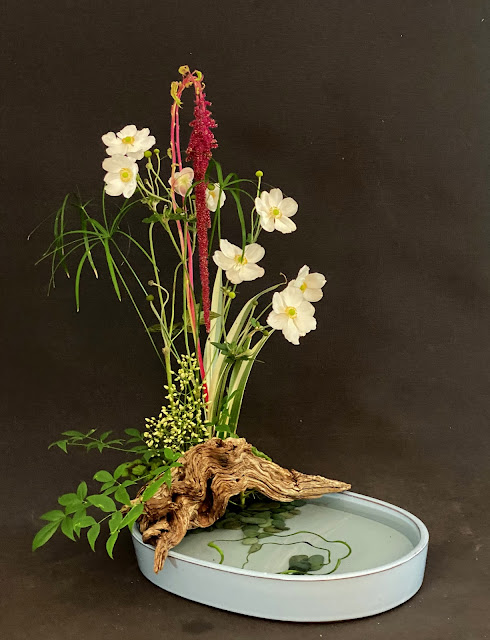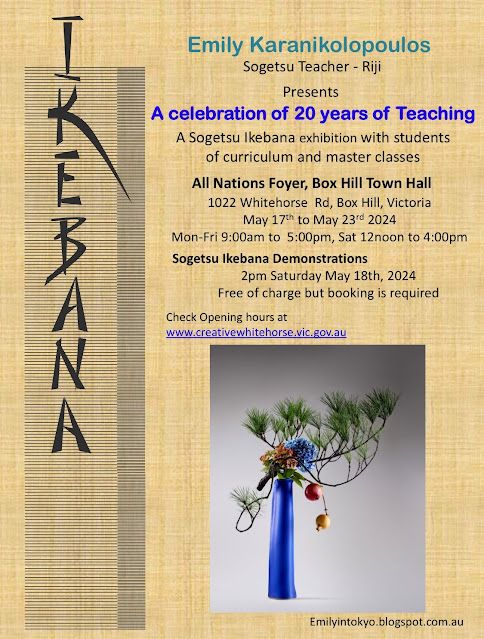Hello all,
I wish those of you who do not live in Melbourne could visit it in autumn. Some of the colours on the northern hemisphere trees and shrubs are stunningly beautiful in their autumnal colours.
In the arrangement, above, I used branches of the evergreen dogwood (cornus capitata) with its strawberry like berries. I removed a fair number of the leaves so that the berries would be more visible. I also used nandina domestica nana from 2 different shrubs, the colourful one is growing in the sun and the green one in the shade.
The photograph, below, is of a large arrangement using pomegranate, callicarpa and viburnum opulus branches and hydrangeas.
Mary's autumnal arrangement was made using persimmon branches and lisianthus, loosely based on Variation no. 4, in a heavy, ceramic container.
Despite its green colours, the arrangement, below, is also an autumnal one, or, perhaps I should call it one of Seasonal Materials. The figs on the tree are not likely to ripen due to the cold weather, so I cut a number of branches with fruit on them and joined them together. Originally I used fig leaves but, unfortunately, they wilted very quickly. I replaced them with fatsia japonica leaves, which are very similar to the fig leaves and last very well.
Yesterday I pruned most of my hydrangeas and, among the prunings, I found some interesting branches and, even, a couple of fresh flowers. I created two simple arrangements, below.
I needed to find a way to balance the materials in this unusual container, in which it is not easy to use a kenzan. I joined the two stems of hydrangea together and onto another stick, which wedged onto the container lengthwise, as per photo, below. I was, then, able to rest the third stem between the others.
And here's a freestyle arrangement by Mary, using New Zealand flax, split in half and lisianthus in a ceramic suiban.
Emily
















































